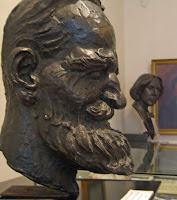But he was also the creator of The Andromeda Strain, The (First) Great Train Robbery, Rising Sun, Congo, Airframe and lots of others. All of them high-concept, all of them told at breakneck speed, all of them meticulously researched, and many of them putting forward a concept or concern that would shortly afterwards become real news. (Only this week, journalists got all excited by the idea that we might clone a mouse that has been dead for sixteen years; the first step toward a Jurassic Park scenario.)
What I loved about Crichton was how he was able to create an air of authority in his fictions. The Andromeda Strain is thoroughly, academically referenced. It just so happens that the documents referenced are all made up.
He took it a step further in Congo, by not only making it all up, but by trying to make it as implausible as a Victorian adventure novel.
Many of his books were turned into films, sometimes successfully and sometimes not. Adaptation is always a tricky business, but most of Crichton's novels were structured and paced like a movie. Where the adaptors followed his blueprint, they usually achieved a successful dramatisation. Where the adaptors thought they knew better, embarrassment would often result.
Congo. What were they thinking?
Crichton was a million miles from Ray Bradbury in style and working methods. Crichton's writing was undecorated, swift and transparent. Bradbury's is poetic, laying a strawberry window between reader and page. Crichton could turn out a novel in a couple of weeks. Bradbury focuses on short bursts of fiction, and has been known to agonise for years over his longer works.
But Crichton, like Bradbury, understood that the magical is what makes us remember a story or film. It may be the verisimilitude and documentary realism that made his books page turners, but it was the T. Rex that made us remember Jurassic Park, the Yul Brynner character on the rampage that we recall from Westworld, the people whose blood has turned to crystals that haunts us from The Andromeda Strain.
So maybe it is all right to remember Michael Crichton as "the creator of Jurassic Park", if we remember him for the magic of it.


















